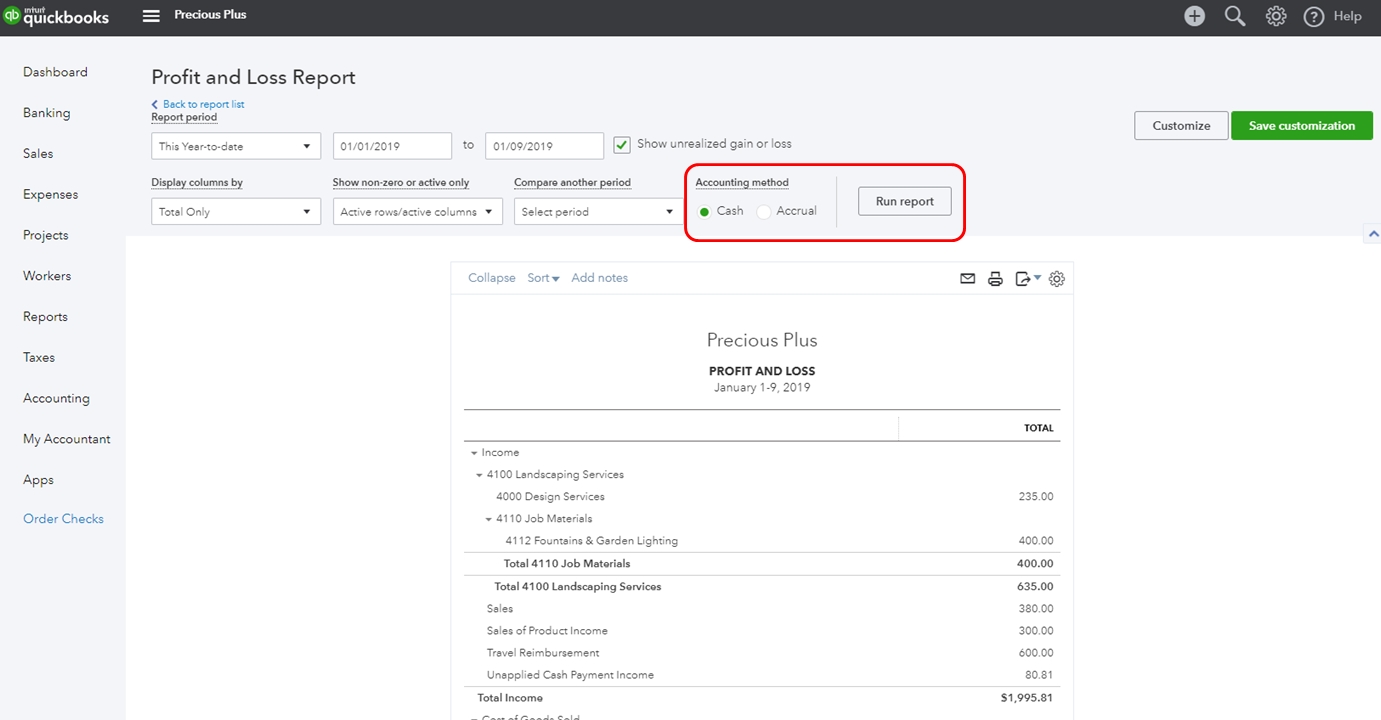

Finance
How To Run A Crowdfunding Campaign
Published: December 21, 2023
Learn how to run a successful crowdfunding campaign and achieve your finance goals with expert tips, strategies, and insights.
(Many of the links in this article redirect to a specific reviewed product. Your purchase of these products through affiliate links helps to generate commission for LiveWell, at no extra cost. Learn more)
Table of Contents
- Introduction
- Planning Your Campaign
- Setting Your Funding Goal
- Creating an Appealing Campaign Page
- Crafting a Compelling Campaign Video
- Building a Solid Marketing Strategy
- Preparing Rewards for Backers
- Launching Your Crowdfunding Campaign
- Managing and Engaging with Backers
- Tracking Progress and Making Adjustments
- Post-Campaign Activities
- Conclusion
Introduction
Crowdfunding has emerged as a popular and effective way for individuals and businesses to raise funds for various projects and initiatives. Whether you’re looking to launch a new product, fund a creative endeavor, or support a social cause, running a crowdfunding campaign can provide the financial boost you need. However, a successful crowdfunding campaign requires careful planning, effective marketing, and strong engagement with backers.
In this article, we will guide you through the process of running a crowdfunding campaign, from initial planning to post-campaign activities. We will provide you with valuable insights and practical tips to help you maximize your chances of achieving your funding goals.
Before diving into the details, let’s understand the essence of crowdfunding. At its core, crowdfunding is the practice of raising small amounts of money from a large number of people, typically through online platforms. It allows entrepreneurs, innovators, and creators to harness the power of community support and turn their ideas into reality.
The popularity of crowdfunding platforms like Kickstarter, Indiegogo, and GoFundMe has skyrocketed in recent years, enabling individuals and businesses to access global networks of potential backers. By leveraging the internet and social media, crowdfunding campaigns have the potential to reach thousands, if not millions, of potential supporters.
However, running a successful crowdfunding campaign is not as simple as creating a campaign page and waiting for money to pour in. It requires careful planning, strategic thinking, and strong execution. With this article, we aim to provide you with a step-by-step guide to help you run a crowdfunding campaign that stands out, captures attention, and ultimately reaches its funding goal.
In the following sections, we will delve into various aspects of running a crowdfunding campaign, including planning, setting your funding goal, creating an appealing campaign page, crafting a compelling campaign video, building a solid marketing strategy, preparing rewards for backers, launching your campaign, managing and engaging with backers, tracking progress, making adjustments, and post-campaign activities.
By the end of this article, you will have a comprehensive understanding of what it takes to run a successful crowdfunding campaign and be equipped with the knowledge and tools to launch your own. Let’s get started!
Planning Your Campaign
Planning is a critical step in running a successful crowdfunding campaign. It lays the foundation for all the subsequent actions and decisions you will make. Before diving into the execution phase, take the time to carefully plan and strategize. Here are some key steps to consider:
- Define your goals: Clearly articulate what you aim to achieve through your crowdfunding campaign. Is it to fund the production of a new product? Support a charitable cause? Launch a creative project? Having a clear goal will help you align your campaign messaging, target audience, and marketing efforts.
- Identify your target audience: Understand who your ideal backers are. Consider factors such as demographics, interests, and motivations. This will help you tailor your campaign messaging and outreach strategies to effectively connect with your target audience.
- Research crowdfunding platforms: Explore different crowdfunding platforms to find the one that aligns with your campaign goals and target audience. Consider factors such as platform fees, audience reach, and success stories of similar campaigns. Popular platforms like Kickstarter, Indiegogo, and GoFundMe are worth considering.
- Set a realistic timeline: Determine the duration of your campaign and set milestones and deadlines for various tasks. A well-planned timeline will help you stay organized and ensure that you’re on track throughout the campaign.
- Create a compelling story: Craft a compelling narrative that resonates with your target audience. Share the story behind your project, your passion, and the impact it can make. A powerful and authentic story will help you connect emotionally with potential backers.
- Set a budget: Determine how much money you need to raise and create a detailed budget. Consider not only the funding goal but also the costs associated with rewards, marketing, and platform fees. Setting a realistic budget will help you gauge the feasibility of your campaign and plan accordingly.
- Build a strong team: Consider assembling a team of individuals who can support you throughout the campaign. Assign roles and responsibilities to ensure smooth execution and effective management of the campaign.
- Develop a marketing plan: Outline your marketing and promotional strategies. Determine how you will reach your target audience, whether it’s through social media, email marketing, influencers, or traditional media. Create a content calendar and allocate resources for marketing activities.
Remember, careful planning is the backbone of a successful crowdfunding campaign. By taking the time to define your goals, understand your audience, research platforms, set a timeline, craft a compelling story, set a budget, build a team, and develop a marketing plan, you set yourself up for success in the subsequent stages of your campaign.
Setting Your Funding Goal
Setting the right funding goal for your crowdfunding campaign is crucial. It’s important to strike a balance between an attainable goal and the amount of funding you truly need. Here are some important considerations to keep in mind when setting your funding goal:
Evaluate your project costs: Start by calculating the estimated costs associated with your project or initiative. Consider expenses such as production costs, manufacturing, marketing, packaging, and any other relevant expenses. It’s important to have a clear understanding of the financial requirements to bring your project to life.
Consider platform and payment fees: Keep in mind that most crowdfunding platforms charge a percentage of the funds raised as platform fees. Additionally, payment processors may also have transaction fees. Take these fees into account when setting your funding goal to ensure you’ll still have enough funds to cover your project costs after deducting these fees.
Set a realistic target: It’s crucial to set a funding goal that is attainable. While it’s natural to aim high, setting an unreasonably high funding goal could lead to disappointment and discourage potential backers. Research similar campaigns in your industry or category to gauge what is considered a reasonable funding goal, and use that as a guideline.
Communicate your funding breakdown: Transparency is key when it comes to crowdfunding. Clearly communicate to your potential backers how the funds will be utilized and what specific costs will be covered. This will instill trust and confidence in your campaign, showing that you have a solid understanding of your project’s financial needs.
Consider stretch goals: Stretch goals are additional funding targets that are set beyond the initial funding goal. If you surpass your initial goal, you can introduce stretch goals to offer extra incentives or unlock additional features or rewards for your backers. This can help maintain momentum and encourage continued support.
Factor in unforeseen expenses: It’s always wise to account for any unexpected expenses or contingencies. Leave some buffer in your funding goal to accommodate any unforeseen costs that may arise during the course of your project.
Keep the momentum going: Setting a reasonable funding goal allows you to achieve it within a reasonable timeframe. A successful campaign that reaches its goal can generate positive momentum and attract more backers. This can lead to greater exposure and increased chances of surpassing your funding goal.
Remember, setting your funding goal is a critical part of your crowdfunding campaign. By evaluating your project costs, considering platform and payment fees, setting a realistic target, communicating your funding breakdown, considering stretch goals, factoring in unforeseen expenses, and keeping the momentum going, you increase your chances of running a successful campaign and achieving your funding objectives.
Creating an Appealing Campaign Page
Your campaign page is the face of your crowdfunding campaign. It’s the first impression potential backers will have of your project and plays a crucial role in capturing their attention and convincing them to support you. Here are some key elements to consider when creating an appealing campaign page:
Compelling project description: Start by crafting a clear and engaging project description. Clearly explain what your project is all about, why it’s unique or innovative, and what problem it solves or what benefit it brings. Use descriptive language and storytelling techniques to captivate potential backers and make them feel connected to your project.
Engaging visuals: Incorporate high-quality visuals such as images and videos to showcase your project. Visuals help to create an emotional connection and provide a visual representation of what you’re trying to achieve. Use professional-grade images and well-edited videos that highlight the key features, benefits, or prototypes of your project.
Clear and concise rewards: Offer enticing rewards to incentivize potential backers to support your campaign. Clearly outline each reward tier, including the pledge amount required and the specific benefits or perks backers will receive. Make sure the rewards are appealing and desirable, aligned with your project, and provide value to your backers.
Project timeline: Share a timeline or roadmap that outlines the key milestones and the estimated completion date of your project. This helps to convey a sense of progress and reinforces your commitment to delivering on your promises. Be realistic and transparent about the timeline, setting expectations for your backers.
Trust signals and social proof: Incorporate trust signals and social proof elements on your campaign page. This can include testimonials from satisfied customers or influencers within your industry, press mentions or endorsements, and any other credibility-building elements that reinforce trust in your project and your ability to deliver.
Storytelling elements: Use storytelling techniques to make your campaign page more compelling. Share personal anecdotes, inspirational stories, or examples of how your project can make a difference. Engage potential backers emotionally and make them feel invested in your journey.
Clear call-to-action: Be sure to clearly communicate the actions you want potential backers to take. Use a prominent and engaging call-to-action button that directs them to pledge their support. Make it easy for them to understand how to back your project and guide them through the process.
Frequently Asked Questions (FAQs): Anticipate common questions or concerns that potential backers may have and provide clear answers in the form of an FAQ section. This helps address any doubts or uncertainties and eliminates barriers to backing your project.
Regular updates: Commit to providing regular updates on your campaign page to keep backers informed and engaged. This shows your dedication to transparency and keeps the momentum going throughout the duration of your campaign.
By creating an appealing campaign page that includes a compelling project description, engaging visuals, clear and concise rewards, a project timeline, trust signals and social proof, storytelling elements, a clear call-to-action, FAQs, and regular updates, you increase your chances of capturing the attention and support of potential backers. Remember to constantly monitor and optimize your campaign page to make sure it effectively communicates the value and excitement of your project.
Crafting a Compelling Campaign Video
A well-crafted campaign video can be a powerful tool to capture the attention and engage potential backers. It allows you to showcase your project in a dynamic and impactful way, connecting emotionally with your audience. Here are some key tips for crafting a compelling campaign video:
Grab attention from the start: The first few seconds of your video are crucial in capturing the attention of viewers. Start with a captivating hook or a visually appealing shot that instantly grabs their attention. Make sure to pique their curiosity and encourage them to continue watching.
Tell your story: Your campaign video is an opportunity to share the story behind your project. Be authentic and passionate in your storytelling. Explain why you’re passionate about your project, what inspired you, and what impact it can make. Engage the viewer emotionally and create a connection with your project.
Showcase your project: Give viewers a clear and visually appealing look at your project. Use high-quality visuals, including images, prototypes, or demonstrations, to showcase the key features and benefits. Show the project in action and highlight what makes it unique or innovative.
Include testimonials or endorsements: Incorporate testimonials from satisfied users or endorsements from influencers or experts in your industry. Social proof can help build credibility and trust in your project. It adds an extra layer of validation and reassurance for potential backers.
Keep it concise and focused: While it’s important to provide enough information, it’s equally important to keep your video concise and focused. Aim for a video length of around 2-3 minutes, as shorter videos tend to have higher engagement. Make every second count and focus on the most compelling aspects of your project.
Create a compelling narrative: Structure your video in a way that flows logically and builds excitement. Start by introducing the problem or need that your project addresses. Then, explain how your project offers a solution or fills that gap. Finally, showcase the potential impact and benefits of supporting your project. Keep the narrative engaging and compelling throughout.
Incorporate music and visuals: Choose a background music track that complements the tone and message of your video. It can help set the right mood and evoke the desired emotions. Use visuals and graphics strategically to enhance the storytelling and reinforce your key points.
Add a call-to-action: Be sure to include a clear call-to-action at the end of your video, urging viewers to back your project. Direct them to your campaign page or provide instructions on how to support your project. Make it easy for them to take the next step.
Optimize for mobile viewing: Many viewers access crowdfunding platforms and watch campaign videos on their mobile devices. Ensure that your video is optimized for mobile viewing, with clear visuals and easy-to-read text. Consider using subtitles or captions to make your video accessible to a wider audience.
Remember, a compelling campaign video can significantly impact the success of your crowdfunding campaign. By grabbing attention from the start, telling your story, showcasing your project, including testimonials or endorsements, keeping it concise, creating a compelling narrative, incorporating music and visuals, adding a clear call-to-action, and optimizing for mobile viewing, you will increase the chances of engaging viewers and convincing them to back your project.
Building a Solid Marketing Strategy
A solid marketing strategy is essential for the success of your crowdfunding campaign. It involves reaching and engaging with your target audience, creating awareness about your project, and compelling potential backers to support you. Here are some key steps to build a strong marketing strategy for your campaign:
Define your target audience: Start by clearly identifying and understanding your target audience. Consider factors such as demographics, interests, and motivations. This will help you tailor your marketing efforts to effectively reach and connect with your ideal backers.
Research your competition: Study similar campaigns or projects in your industry or category that have been successful. Analyze their marketing strategies, messaging, and audience engagement tactics. Identify what worked well for them and find ways to differentiate yourself and stand out from the competition.
Create a compelling campaign story: Craft a compelling and engaging story that clearly communicates the value and impact of your project. Highlight the problem or need it solves, the benefits it offers, and why it matters. Use storytelling techniques to captivate your audience and make them emotionally invested in your project.
Utilize social media: Leverage the power of social media platforms to promote your campaign. Create dedicated accounts or pages on platforms like Facebook, Instagram, Twitter, and LinkedIn. Regularly post engaging content, updates, behind-the-scenes glimpses, and shareable visuals. Engage with your audience, respond to comments, and encourage them to share your campaign with their networks.
Collaborate with influencers: Identify influencers or bloggers in your niche who have a substantial following. Reach out to them and offer them an exclusive preview or access to your project. Encourage them to share their experiences and thoughts about your project with their audience. Their endorsement or recommendation can greatly amplify your reach and credibility.
Generate media coverage: Pitch your campaign to relevant media outlets, bloggers, journalists, or podcasters. Craft a compelling press release, highlighting the unique aspects of your project and its potential impact. Seek opportunities for interviews, guest posts, or features that can generate more exposure and attract a wider audience.
Create visual and shareable content: Develop visually appealing and shareable content to engage your audience. This can include short videos, infographics, catchy images, or GIFs that convey key messages about your campaign. Encourage your backers and followers to share this content on their own social media networks to expand your reach.
Engage with your audience: Interact with your backers and potential supporters on social media, email newsletters, and comments sections. Respond promptly to questions, comments, and concerns. Make your audience feel heard and valued, and foster a sense of community around your project.
Offer early bird promotions: Create a sense of urgency and incentivize early support by offering exclusive rewards or discounts to those who pledge their support in the early stages of your campaign. This can help create a positive momentum and motivate others to back your project.
Track and analyze your marketing efforts: Use analytics tools and data to regularly track the performance of your marketing activities. Monitor metrics such as website traffic, social media engagement, email open rates, and conversion rates. Adjust your strategies based on the insights gathered to optimize your marketing efforts.
Building a solid marketing strategy is crucial for the success of your crowdfunding campaign. By defining your target audience, researching your competition, creating a compelling campaign story, utilizing social media, collaborating with influencers, generating media coverage, creating visual and shareable content, engaging with your audience, offering early bird promotions, and tracking your marketing efforts, you will increase your chances of reaching your funding goal and creating a buzz around your project.
Preparing Rewards for Backers
One of the key elements of a successful crowdfunding campaign is offering enticing rewards to your backers. Rewards serve as a way to thank and incentivize individuals who support your project. Here are some important factors to consider when preparing rewards for your backers:
Align rewards with pledge levels: Create different reward tiers that correspond to different pledge levels. Offer a range of options to cater to different budget preferences and provide incentives for backers to pledge higher amounts. Make sure that the value of the rewards aligns with the level of support.
Make rewards exclusive: Create a sense of exclusivity by offering rewards that are unique to your campaign. Consider limited edition merchandise, personalized items, or early access to your product or service. Offering exclusive rewards entices backers and makes them feel like they are part of a special group.
Provide value to backers: Ensure that your rewards provide value to your backers. Consider what they would find appealing and beneficial. It could be a discount on your product, a VIP experience, access to additional content, or special recognition as a backer. The rewards should be seen as a token of appreciation for their support.
Include tangible and intangible rewards: Mix both tangible and intangible rewards to appeal to different preferences. Tangible rewards could include physical products, merchandising, or prototypes. Intangible rewards could include personalized thank you notes, acknowledgments, or digital content such as exclusive updates or behind-the-scenes access.
Set realistic delivery timelines: Clearly communicate the estimated delivery timelines for each reward. Be realistic and factor in production time, manufacturing logistics, and any potential delays. Providing accurate and transparent delivery expectations helps build trust with your backers.
Add stretch goals: Consider introducing stretch goals to encourage backers to pledge additional funds. When you reach certain funding milestones, unlock new rewards or enhancements to existing rewards. Stretch goals energize and motivate backers to continue supporting your campaign and help generate momentum.
Consider cost and feasibility: When designing your rewards, make sure to consider the cost and logistical feasibility of fulfilling them. Calculate the expenses associated with production, packaging, shipping, and any customization required. Ensure that you can fulfill the rewards within the allocated budget and timeline.
Create a visually appealing reward chart: Display your reward tiers in a visually appealing and easy-to-understand chart. Clearly indicate the pledge levels and the corresponding rewards at each level. This allows potential backers to quickly grasp the options available to them and makes the decision-making process more straightforward.
Provide updates on rewards: Throughout your campaign, regularly update your backers on the progress of reward production and fulfillment. Communicate any changes or delays and keep them informed of the status. Timely and transparent communication helps manage expectations and maintains trust with your backers.
Express gratitude and appreciation: Show sincere gratitude and appreciation to your backers for their support. Include personalized thank you notes or acknowledgments in your rewards. Make your backers feel valued and let them know how their contribution will help bring your project to life.
Remember, the rewards you offer are a crucial element of your crowdfunding campaign. By aligning rewards with pledge levels, making them exclusive, providing value, including both tangible and intangible options, setting realistic delivery timelines, adding stretch goals, considering cost and feasibility, creating a visually appealing reward chart, providing updates, and expressing gratitude, you will attract more backers and enhance their overall experience with your campaign.
Launching Your Crowdfunding Campaign
After careful planning and preparation, it’s time to launch your crowdfunding campaign and make it available to the public. The launch phase is crucial, as it sets the tone and momentum for your entire campaign. Here are some key steps to successfully launch your crowdfunding campaign:
Create a compelling campaign launch announcement: Craft a captivating and attention-grabbing announcement to generate excitement and anticipation for your campaign launch. This announcement can be in the form of a blog post, press release, or a series of social media posts. Clearly communicate the launch date and time, and provide a sneak peek or teaser of what backers can expect from your project.
Utilize your network: Leverage your personal and professional networks to spread the word about your campaign. Share the launch announcement with friends, family, colleagues, and industry contacts. Encourage them to support your campaign and share it with their own networks. Personal connections can be a powerful catalyst for generating initial support.
Engage with your audience: Be ready to engage with your audience as soon as your campaign goes live. Respond promptly to comments, messages, and questions across your social media platforms, crowdfunding platform, and email inquiries. Prompt and friendly communication helps build trust with potential backers and encourages them to support your campaign.
Leverage early momentum: Capitalize on the initial excitement and support by reaching out to backers who have already pledged. Encourage them to share your campaign with their networks and help spread the word. Actively engage with these early backers and show appreciation for their support.
Return the favor: Support other crowdfunding campaigns and be an active member of the crowdfunding community. Engage with and back projects that align with your interests. This not only helps build goodwill but also increases visibility and potential networking opportunities with other campaigners.
Implement your marketing strategy: Execute your well-planned marketing strategy to reach your target audience. Leverage social media, email marketing, influencers, and other channels to create awareness and promote your campaign. Keep your messaging consistent and compelling across all platforms.
Create engaging content: Continuously create and share engaging content throughout your campaign. Regularly update your backers on the progress of your project and provide behind-the-scenes glimpses. Share stories, testimonials, or user-generated content to keep backers invested and motivated to support your campaign.
Offer limited-time promotions: Generate excitement and encourage support by offering limited-time promotions or early bird discounts during the first few days of your campaign. Scarcity and urgency can drive backers to pledge their support sooner rather than later.
Provide regular updates: Keep your backers informed and engaged by providing regular updates on the progress of your campaign. This includes sharing any media coverage, partnerships, or key milestones reached. Regular updates demonstrate transparency and a high level of commitment, which helps build trust with your backers.
Engage with influencers: Identify influencers or bloggers in your niche and reach out to them to support your campaign. Offer them exclusive content, samples, or early access to your project as an incentive to promote it to their followers. Influencer endorsements can greatly increase your campaign’s visibility.
Adapt and adjust: Continuously monitor the performance and engagement of your campaign. Analyze data and metrics to identify areas for improvement. Adjust your strategies and tactics accordingly to maximize the impact and reach of your campaign.
Launching your crowdfunding campaign is an exciting and critical phase. By creating a compelling launch announcement, leveraging your network, engaging with your audience, leveraging early momentum, implementing your marketing strategy, creating engaging content, offering limited-time promotions, providing regular updates, engaging with influencers, and adapting as needed, you will set a strong foundation for a successful campaign and increase your chances of achieving your funding goals.
Managing and Engaging with Backers
Once your crowdfunding campaign is live and backers start pledging their support, it’s crucial to effectively manage and engage with them. Building strong relationships with your backers not only helps in achieving your funding goals but also creates a loyal and supportive community around your project. Here are some key strategies to manage and engage with your backers:
Respond promptly: Be proactive and responsive in your communication with backers. Respond to their messages, comments, and inquiries in a timely manner. Prompt and friendly communication shows that you value their support and helps maintain a positive relationship.
Express gratitude: Show genuine appreciation for your backers’ support. Thank them individually and personally whenever possible. Send personalized thank you messages or acknowledgments to express your gratitude for their contribution. A little gratitude goes a long way in building a strong bond with your backers.
Provide regular updates: Keep your backers informed about the progress of your project through regular updates. Communicate milestones, achievements, and challenges you have encountered. Share behind-the-scenes updates, images, or videos to keep them engaged and excited about your project’s development.
Ask for feedback: Engage your backers by soliciting their feedback and input. Seek their opinions on product features, reward additions, or other project-related decisions. Involving your backers in the decision-making process creates a sense of ownership and makes them feel valued.
Offer exclusive perks: Provide exclusive perks or updates to your backers as a token of appreciation for their support. This could include early access to new features or beta testing opportunities. Exclusive perks make backers feel special and deepen their engagement with your project.
Foster a sense of community: Create a space where backers can interact with each other and with you. This can be a private backer-only forum, a dedicated social media group, or a live chat session. Encourage backers to share their experiences, ask questions, and provide support to one another. Fostering a sense of community strengthens the bond among backers and increases their loyalty to your project.
Recognize and spotlight backers: Showcase your backers and their contributions. Highlight their names or usernames on your website, social media, or project updates. Publicly recognize their support and express gratitude. This not only further strengthens the relationship with individual backers but also encourages others to support your project.
Address concerns with transparency: In case of any setbacks or challenges, communicate openly and honestly with your backers. Address their concerns or questions promptly and transparently. Keep them updated on how you plan to overcome obstacles and stay committed to delivering on your promises.
Run referral or loyalty programs: Encourage backers to refer your campaign to their friends and networks by offering referral incentives or loyalty rewards. This not only helps in expanding your supporter base but also motivates existing backers to stay engaged and actively promote your campaign.
Create backer-exclusive content: Reward your backers by providing them with exclusive content, such as behind-the-scenes footage, insider updates, or special access to your creative process. This makes them feel like valued insiders and gives them a sense of being part of something special.
Managing and engaging with your backers is crucial for the success of your crowdfunding campaign. By responding promptly, expressing gratitude, providing regular updates, asking for feedback, offering exclusive perks, fostering a sense of community, recognizing and spotlighting backers, addressing concerns transparently, running referral or loyalty programs, and creating backer-exclusive content, you’ll build strong relationships with your backers and create a supportive community that will champion your project.
Tracking Progress and Making Adjustments
Tracking the progress of your crowdfunding campaign is essential to ensure its success and make informed decisions along the way. By consistently monitoring key metrics and adjusting your strategies as needed, you can optimize your campaign’s performance. Here are some important steps to effectively track progress and make necessary adjustments:
Monitor key metrics: Keep track of important metrics that help measure the success of your campaign. This includes the total funds raised, the number of backers, referral sources, conversion rates, and engagement levels on your campaign page and social media platforms. Analyzing these metrics regularly provides insights into the effectiveness of your marketing efforts and helps identify areas for improvement.
Use analytics tools: Utilize analytics tools provided by your crowdfunding platform and social media channels to gain a deeper understanding of your campaign’s performance. These tools can provide valuable data on user behavior, traffic sources, and conversion rates. Leverage this data to make data-driven decisions and optimize your campaign strategies accordingly.
Identify what’s working: Analyze your campaign data to identify strategies and tactics that are driving the most engagement and conversions. Determine which marketing channels are performing well and which rewards are most popular. Double down on what’s working by allocating more resources and efforts to those areas.
Address areas of improvement: Identify any weak points or underperforming aspects of your campaign. This could include low engagement on certain social media platforms, low click-through rates on your campaign page, or high abandonment rates during the checkout process. Address these areas by testing new approaches, refining your messaging, or adjusting your marketing tactics.
Seek feedback from backers: Proactively seek feedback from your backers to gauge their satisfaction and identify areas for improvement. Send out surveys or reach out to backers individually to gather their opinions and suggestions. This feedback can provide valuable insights and help you enhance your campaign experience.
Adapt your marketing strategies: Based on the data and feedback collected, make necessary adjustments to your marketing strategies. This could involve reallocating your budget to higher-performing channels, refining your messaging to better resonate with your audience, or leveraging new marketing tactics to reach untapped segments of your target market.
Experiment with new approaches: Don’t be afraid to experiment with new ideas and techniques throughout your campaign. Test different variations of your messaging, offers, or visuals to see what resonates most with your audience. This iterative approach allows you to continuously improve and optimize your campaign strategies.
Engage with your audience: Stay actively engaged with your backers and potential supporters throughout the campaign. Respond to comments, messages, and inquiries promptly. Address any concerns or issues raised by backers. By staying connected, you can build trust, maintain enthusiasm, and foster a sense of community around your campaign.
Monitor your competition: Keep an eye on other campaigns in your industry or niche. Analyze their strategies, messaging, and levels of engagement. Identify any emerging trends or innovative approaches that you can learn from or adapt to enhance your own campaign’s performance.
Stay flexible and adaptable: Remain flexible in your approach and be open to making adjustments as needed. The crowdfunding landscape is dynamic, and what works at the beginning of your campaign may need to be modified later on. Continuously evaluate the performance of your campaign and be ready to pivot your strategies to optimize results.
By consistently tracking the progress of your crowdfunding campaign, analyzing key metrics, addressing areas of improvement, seeking feedback, adapting your marketing strategies, experimenting with new approaches, engaging with your audience, monitoring your competition, and staying flexible, you can maximize the effectiveness of your campaign and increase your chances of achieving your funding goals.
Post-Campaign Activities
Once your crowdfunding campaign comes to a close, your post-campaign activities are just as important as the campaign itself. How you handle the aftermath will impact your relationship with backers and the long-term success of your project. Here are some key post-campaign activities to consider:
Express gratitude: Immediately after your campaign ends, express your sincere gratitude to all your backers. Send out thank-you messages to each supporter, acknowledging their contribution and the role they played in bringing your project to life. Make your appreciation personal and heartfelt.
Provide updates: Continue to provide regular updates to your backers and keep them informed about the progress of your project. Share achievements, milestones reached, and any challenges you are facing. Transparency is key in maintaining trust and keeping your backers engaged even after the campaign ends.
Manage fulfillment process: Begin the process of fulfilling your backers’ rewards promptly. Organize the logistics of production, packaging, and shipping to ensure a smooth and timely delivery. Clearly communicate the estimated delivery timeline to manage expectations and keep backers informed of any potential delays.
Communicate challenges: If you encounter any unexpected challenges or delays during the fulfillment process, communicate openly and honestly with your backers. Be transparent about the issues you face and provide regular updates. By addressing the challenges head-on and being proactive in finding solutions, you can maintain trust and mitigate any potential negative impact on your reputation.
Seek feedback: Reach out to your backers to gather feedback on their overall experience with your campaign and the fulfillment process. Surveys, questionnaires, or individual communications can help you gather valuable insights to improve future campaigns or refine your product or service offering.
Deliver exceptional customer service: Provide top-notch customer service to your backers throughout the fulfillment process. Respond promptly to queries, resolve issues or concerns, and provide support as needed. Delivering a positive and personalized experience strengthens the relationship with your backers and can lead to future support and advocacy.
Encourage user-generated content: Motivate your backers to share their experiences with your project on social media and other platforms. Encourage them to post photos, videos, or testimonials using your product or showcasing their rewards. User-generated content serves as social proof and can help build credibility for your project.
Share success stories: Highlight success stories or positive feedback from satisfied backers. Share testimonials, reviews, or case studies that showcase the impact and benefits of your project. This can help attract new supporters and provide validation for potential customers or investors in the future.
Nurture your community: Continue to engage with your backers even after the campaign ends. Foster a sense of community by regularly communicating with them through newsletters or exclusive updates. Keep them informed about upcoming projects, discounts, or exclusive offers to maintain their interest and support.
Deliver on your promises: Above all, ensure that you deliver on the promises made during your campaign. Meet or exceed the expectations of your backers by providing high-quality products or services. The success of your campaign and your reputation depend on your ability to fulfill what you pledged.
Post-campaign activities are crucial for maintaining positive relationships with your backers and setting the stage for future endeavors. By expressing gratitude, providing updates, managing the fulfillment process, seeking feedback, delivering exceptional customer service, encouraging user-generated content, sharing success stories, nurturing your community, and delivering on your promises, you will leave a lasting and positive impression on your backers and position yourself for continued success.
Conclusion
Running a successful crowdfunding campaign requires careful planning, effective execution, and strong engagement with your backers. By following the steps outlined in this article, you can increase your chances of achieving your funding goals and bringing your project to life. Here’s a summary of the key points covered:
Start by thoroughly planning your campaign, defining your goals, identifying your target audience, and researching crowdfunding platforms. Create a compelling campaign page and video that effectively communicate the value and impact of your project. Build a solid marketing strategy that includes social media, influencers, and engaging content to reach your target audience.
Prepare enticing rewards for your backers and set a realistic funding goal that covers your project costs. Launch your campaign with a captivating announcement and leverage your network to generate early momentum. Engage with your backers, express gratitude, and provide regular updates throughout the campaign.
Track the progress of your campaign, gather feedback, and make necessary adjustments to optimize your strategies. Engage with your audience, manage fulfillment, and deliver exceptional customer service. Encourage user-generated content and share success stories to build credibility and attract new supporters.
Finally, conduct post-campaign activities with gratitude and transparency. Continue to nurture your community, deliver on your promises, and set the foundation for future endeavors.
Remember, running a crowdfunding campaign is not just about raising funds, but also about building relationships with your backers. By creating a compelling campaign, engaging with your audience, and delivering on your promises, you can establish a loyal community that supports your project and helps you achieve long-term success.
So, take the lessons and insights shared in this article, put them into action, and embark on your crowdfunding journey with confidence. Good luck!














